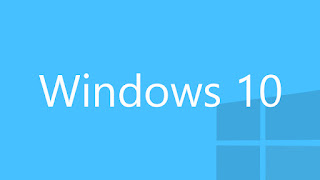 |
| Windows 10 Operating System |
News, reports, debates and rumors about Windows 10
OS have been trending for some months now. One would definitely wonder about
Microsoft’s decision to skip Windows 9 and move to Windows 10. Sources close to
Microsoft reveal that the name Windows 10 was picked to emphasize that the OS
was not a continuation of the previously released Windows 8 or Windows 8.1.
Microsoft’s Terry Myerson was reported to have said that “We’re not building an
incremental product.” He added that “When you see the product in its fullness,
I think you’ll agree it’s an appropriate name for the breadth of the product
family that’s coming,”
Meanwhile, some rumors indicate that the developers
team of Microsoft had planned to christen the new operating system as Windows
One, similar to OneNote and OneDrive. But it was dropped later.
Windows 10 operating system will be a brand new
operating system. The tech preview of the operating system, which got released
a few months ago, has gathered only good reviews so far. Unfortunately, Windows
10 tech preview is not released to every user. As of now, only users who are
part of Microsoft’s Windows Insider Program are given permission to download
Win 10 tech preview. And it is said that Microsoft has put forth several
complicated conditions to avoid a surge of new users signing up with Windows
Insider Program.
You must be quite intrigued to know about the new
features that have been added or are going to be added to Windows 10. According
to some reports, the Windows 10 tech preview contains only some of the
features. A good number of features are still to be introduced. Some say that
Microsoft would introduce about two third of all the features in the upcoming
Windows 10 Consumer Preview which will soon be released.
Among the many Windows 10 features, what seems to be
most exciting is the adoption of some of the traditional features; for
instance, the return of the Start menu which was dropped in the previous
Windows 8 OS. According to Microsoft, the new Windows 10 OS will be an
operating system that can modify itself to any platform on which it is
installed. For instance, it will acclimatize to the desktop ecosystem when it
is installed on a non-touch screen desktop device. Similarly it will offer
maximum touch screen-friendly experience when it is installed on a touch
screen-based smartphone or tablet.

No comments:
Post a Comment